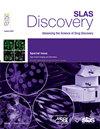在重复次数少的实验中进行多次两两比较时,应该使用Bonferroni的方法,而不是Tukey的方法来控制假阳性的总数。
IF 2.7
4区 生物学
Q2 BIOCHEMICAL RESEARCH METHODS
引用次数: 0
摘要
统计检验可以用来帮助确定实验操作是否产生效果。在均数检验中,如果比较两组以上的1型错误(假阳性结果)的总数增加,除非使用纠正方法。Tukey的方法被认为可以很好地控制假阳性的数量,并且在进行所有两两比较时具有很高的统计能力。然而,在实验室实验中重复的数量往往相当低,小样本量可能会破坏统计方法的假设。我使用模拟来调查当有3- 6个实验组和2- 6个实验重复(跨越典型值范围的条件)时,不同的事后检验所遵循的方差分析控制假阳性总数的效果。Tukey的方法是最常见的方法之一,但它允许的数量太多了。我调查了其他11种控制误报的方法,发现没有一种方法比简单的Bonferroni校正更有效,或者更有效。我的结论是,研究人员不应该使用ANOVA和Tukey的方法进行两两比较,而应该在有限数量的预先选择的比较中使用Bonferroni的方法。本文章由计算机程序翻译,如有差异,请以英文原文为准。
Bonferroni’s method, not Tukey’s, should be used to control the total number of false positives when making multiple pairwise comparisons in experiments with few replicates
Statistical tests can be used to help determine whether experimental manipulations produce effects. In tests of means, when more than two groups are compared the total number of Type 1 errors (false positive results) increases unless a correction is used. Tukey’s method is thought to offer good control of the number of false positives and high statistical power when all pairwise comparisons are made. However, the number of replicates in laboratory experiments is often quite low, and small sample sizes can undermine assumptions underlying statistical methods. I used simulations to investigate how well ANOVA followed by different post-hoc tests controls the total number of false positives when there are 3- 6 experimental groups and 2- 6 experimental replicates, conditions that span the range of typical values. Tukey’s method, one of the most common, allows too many. I investigated 11 other approaches to controlling false positives and found that none is as effective as the simple Bonferroni correction or offers much more power. I conclude that researchers should not make all pairwise comparisons using ANOVA followed by Tukey’s method but instead use Bonferroni’s method on a limited number of pre-selected comparisons.
求助全文
通过发布文献求助,成功后即可免费获取论文全文。
去求助
来源期刊

SLAS Discovery
Chemistry-Analytical Chemistry
CiteScore
7.00
自引率
3.20%
发文量
58
审稿时长
39 days
期刊介绍:
Advancing Life Sciences R&D: SLAS Discovery reports how scientists develop and utilize novel technologies and/or approaches to provide and characterize chemical and biological tools to understand and treat human disease.
SLAS Discovery is a peer-reviewed journal that publishes scientific reports that enable and improve target validation, evaluate current drug discovery technologies, provide novel research tools, and incorporate research approaches that enhance depth of knowledge and drug discovery success.
SLAS Discovery emphasizes scientific and technical advances in target identification/validation (including chemical probes, RNA silencing, gene editing technologies); biomarker discovery; assay development; virtual, medium- or high-throughput screening (biochemical and biological, biophysical, phenotypic, toxicological, ADME); lead generation/optimization; chemical biology; and informatics (data analysis, image analysis, statistics, bio- and chemo-informatics). Review articles on target biology, new paradigms in drug discovery and advances in drug discovery technologies.
SLAS Discovery is of particular interest to those involved in analytical chemistry, applied microbiology, automation, biochemistry, bioengineering, biomedical optics, biotechnology, bioinformatics, cell biology, DNA science and technology, genetics, information technology, medicinal chemistry, molecular biology, natural products chemistry, organic chemistry, pharmacology, spectroscopy, and toxicology.
SLAS Discovery is a member of the Committee on Publication Ethics (COPE) and was published previously (1996-2016) as the Journal of Biomolecular Screening (JBS).
 求助内容:
求助内容: 应助结果提醒方式:
应助结果提醒方式:


